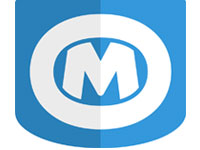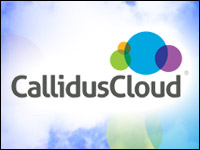
OpenMethods, which offers an omnichannel optimization platform that lets companies integrate their telephony platforms into Oracle CRM, on Tuesday announced integration with Next Caller’s Advanced Caller ID database.
The integration will let contact centers on the Oracle Service Cloud use real-time contextual data for more than 500 million landline, mobile and VoIP numbers to personalize and simplify their agent and customer interactions.
OpenMethods integrates interactive voice response and telephony data into the CRM package call center agents use, saving customers from repeating who they are and why they’ve called, which can take about 30 seconds.
However, many calls are from prospects or customers who don’t have data in the CRM, noted OpenMethods CEO Gerrit Lydecker.
“In these cases, Next Caller helps identify these prospects and customers utilizing their databases and tools,” he told CRM Buyer.
The integration “will help decrease overall time-to-resolution and improve the customer service experience,” said Cindy Zhou, a principal analyst at Constellation Research.
“The value is in the [Next Caller] data and the ability to augment customer records in the CRM for richer analytics and correlation of services data to sales opportunities,” she told CRM Buyer.
What the Integration Entails
Typically, a call comes into a contact center through the interactive voice response system. Customers input their account information and the reason for their call, which then is routed to an agent, who often uses a CRM package, OpenMethods’ Lydecker said.
“The IVR and telephony data doesn’t get passed through, leaving the agent to once again ask for the customer’s account information and why they called,” he said, but OpenMethods integrates the IVR and telephony data into the CRM, saving customers about 30 seconds.
The integration lets contact centers on Oracle CRM use OpenMethods’ PopFlow Studio to quickly integrate Next Caller’s data and tools into the CRM package to repopulate data from the caller, automate workflows, and pop up the appropriate screens, said Lydecker.
Deploying the integrated solution in production takes a few weeks, but some OpenMethods customers “realize an ROI immediately,” he added.
Call center agents are trained to handle data from their existing CRM. There’s no learning curve required for agents to manage data that comes from Next Caller, Lydecker pointed out.
Oracle CRM customers are likely to benefit tremendously, suggested Ray Wang, principal analyst at Constellation Research.
Oracle “has an extensive base from its acquisition of Siebel,” he told CRM Buyer.”These are the toughest and gnarliest use cases of CRM in the contact center.”
Possible Privacy Issue
Contextual information provided by Next Caller’s Advanced Caller ID includes a caller’s name, address, income, demographic breakdown, fraud potential and social profile.
That may raise questions about privacy, long a bone of contention for digital marketers. The issue has gained importance in the wake of the EU’s scrapping of the U.S. Safe Harbor agreement in 2015.
“The information Next Caller provides is already publicly available,” noted Jeff Kirchick, the company’s VP of enterprise sales.
“Next Caller aggregates this data in real time using an algorithm that accounts for the veracity of different sources,” he told CRM Buyer.
However, data sets like Next Caller’s Advanced Caller ID database “are pulled together from all manner of sources unrelated to identification and authentication,” said Steve Wilson, a principal analyst at Constellation Research.
“It’s highly unlikely that individuals ever had a chance to consent in any meaningful way to having their information surface in different call centers,” he told CRM Buyer.
The data does raise privacy concerns, said Michael Jude, a program manager at Stratecast/Frost & Sullivan.
However, “it’s hard to argue that a person can disclose his life history on a social site,” he told CRM Buyer, and “then is allowed to contest its use.”
























































